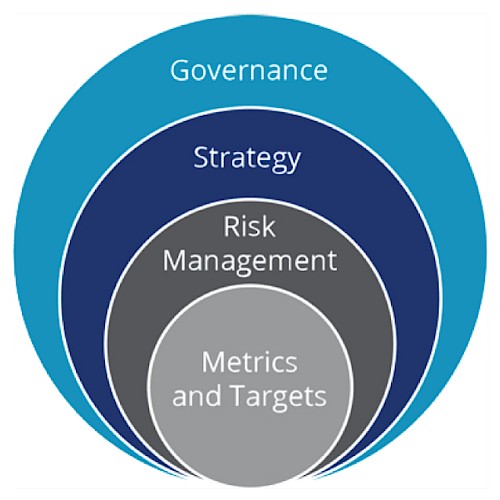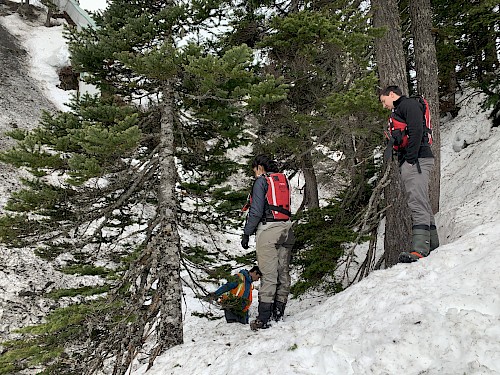Skeena is committed to responsibly managing the natural resources where we operate, through our environmental management system that addresses water, waste, and biodiversity impacts.
Our Environmental and Social Responsibility Policy is based on the Environmental and Social Design Principles that we co-developed with the Tahltan First Nation. These Principles are intended to ensure that we act as good stewards of the Tahltan Lands and protect the health and well-being of local communities. To do this we are developing an environmental and social management system (ESMS) to protect culturally important areas, critical wildlife habitat and water resources. Part of our agreement with the Tahltan is that we will minimize our mine footprint to the extent feasible, maximize energy efficiency of mine operations to the extent feasible, and make use of previously disturbed areas as much as possible.
Environmental management requires ongoing risk identification, assessment, and control. An output of this process are environmental management plans (EMPs). EMPs provide frameworks through which environmental priorities, responsibilities, and risks are systematically managed. They form the basis of the environmental practices to be applied during the planning, construction, and operation of a project. Our Standard Operating Procedures (SOPs) are developed from these and describe in detail how activities are to be performed.
Climate Change, Greenhouse Gases and Energy Management
In 2017, with increasing awareness of the risks climate change poses to the global economy, the Task Force on Climate Related Financial Disclosures (TCFD) developed recommendations to help companies provide better information to capital markets. These recommendations are based on four aspects of how organizations operate: governance, strategy, risk management, and metrics and targets.
Skeena Resources became a supporter of the TCFD in 2021. We are proud to operate in British Columbia, Canada where strong carbon pricing has been in place since 2008. Operating in a carbon-regulated jurisdiction creates a level-playing field for companies such as Skeena who choose to innovate and minimize their environmental impact.

Figure 1: TCFD Framework
For more information on our approach to Climate Change, Greenhouse Gases and Energy Management, including our 2022 emissions and performance, please see our 2022 ESG report
Water
Water is a shared resource and a critical element in healthy ecosystems. Eskay Creek is located in an area of high rainfall with sufficient water supply to support mine operations without impacting natural water bodies in the region. Nevertheless, effectively stewarding this shared resource requires collaboration with other rights-holders and strong operational controls. One of our Environmental and Social Design Principles with the Tahltan Nation is to ensure that our water management plan minimizes impacts to water resources.
Water Use and Discharge
Our development plan includes drawing water from the Tom MacKay Tailings Storage Facility (TMSF) for our industrial uses. The water we use for milling ore and other processes will be recycled to the extent possible so we can minimize our need for freshwater to support operations.
Water Quality
Water quality has been monitored continually since baseline studies began in 1991 when the Eskay Creek Mine was originally proposed. We maintain water quality stations around the site and compare water quality indicators such as pH, turbidity, and dissolved metals to baseline concentrations in nearby streams and reference wells. We then compare these indicators to water quality standards and permitted discharge criteria and report this information to Tahltan, Provincial and Federal regulators. The stability of this data over such a long period of time gives us confidence that re-development of Eskay Creek is unlikely to have long-term, negative water quality impacts. Water models, built on this comprehensive dataset and our engineering information, are being completed. These will be a valuable tool to inform continued improvements in our design that will further our objective of minimizing effects to water resources in the natural environment.

Image 1: Environmental Team collecting samples in the field (2021)
Waste Management
Restarting a past-producing mine also means that we have the opportunity to recycle and reuse much of the previous infrastructure, further reducing waste. One of our Environmental and Social Design Principles is to minimize the mine footprint and make use of previously disturbed areas as much as possible. Hazardous waste such as used oil, used batteries, and hydraulic fluids, is transported off-site to authorized regional recycling and waste facilities within British Columbia. Our IT department recycles Skeena’s electronic waste (e-waste), such as old laptop computers, through BC’s extended producer responsibility programs.
The permitted Tom MacKay tailings storage facility, used by Barrick, has capacity for the life-of-mine tailings and any potentially acid generating (PAG) waste rock from our Project. Given the facility’s long life and continual monitoring, we have been able to observe that there has been no remobilization of deleterious elements, such as mercury, arsenic, and antimony, from the historic mine wastes. This gives us confidence that this facility will remain stable into the future. This is a location-appropriate, field-level, and time-tested demonstration of the effectiveness of the waste management strategies that we are planning to utilize in the Eskay Creek Revitalization Project.
Skeena has a demonstrated record of responsible management of mine wastes. As operators of the past-producing Eskay Creek and Snip mines, we are responsible for caring for and monitoring these closed sites, including their waste storage facilities. Under the Health, Safety and Reclamation Code for Mines in British Columbia these facilities are inspected regularly by provincial mines inspectors. Our past experience helps us plan our projects with a clear understanding of the obligations and challenges associated with managing closed sites and waste facilities.
Biodiversity Management
Eskay Creek is located within the Prout Plateau, an area characterized by steep mountains with isolated plateaus, high precipitation, shallow soils, and large rivers draining westward to the ocean. Nearby mountain slopes are heavily forested while the sub-alpine terrain around the Project site has sparser forest cover. The average precipitation at the site is approximately 2,800 mm annually with the majority this falling as snow between September and May. The biogeoclimatic zones in the area include Mountain Hemlock, Engelmann Spruce-Subalpine Fir, and Interior Cedar Hemlock which provide habitat for a variety of wildlife species such as black bears, grizzly bears, moose, and mountain goats. While there are no internationally recognized protected areas nearby there are numerous provincial parks and wildlife areas, the closest being Ningunsaw Provincial Park 20 km northeast of our site.
We have strict controls in place to ensure vehicle operators drive at safe speeds and report any wildlife observations or incidents. We regularly engage with our workforce to reinforce the importance of these activities, communicate new initiatives, and get feedback on wildlife management procedures.
Based on over 30 years of exhaustive sampling and monitoring, the Tom MacKay watershed and areas downstream in Ketchum Creek do not host any fish populations. The alpine lakes and streams in the Tom MacKay Creek watershed are naturally low in plant nutrients and multiple barriers (waterfalls and cascades) prevent fish from entering these streams and lakes.

Image 2: A Swainson’s Hawk spotted near the Eskay Creek site project (2021)
Closure Planning and Reclamation
Consistent with the Social and Environmental Design Principles agreed-upon by Tahltan and Skeena, our vision at the end of production at Eskay Creek is to have a stable, revegetated site designed to best mitigate potential environmental risks. We are developing our Closure and Reclamation Plan as part of the permitting process to achieve land use objectives such as the preservation of wildlife habitat. Our closure planning is a collaborative process with the Tahltan Nation to determine post-mining land use objectives and supporting strategies, including addressing regulatory requirements.